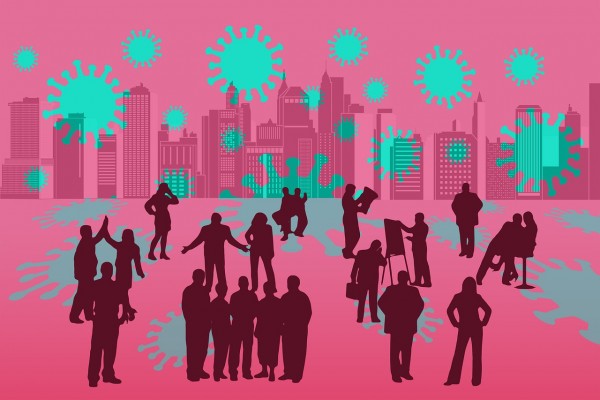A Brazilian City May Have Enough COVID-19 Cases to Reach Herd Immunity
Preliminary research suggests that coronavirus cases in Manaus, Brazil, see a decline in number as the explosive outbreak of COVID-19 left enough people infected for herd immunity to begin kicking in.
The first case diagnosed in Manaus, located in the Amazon Rainforest, was on March 13. Since then, the city has endured increasing numbers of new cases during March and April, peaked in early May, and then declining from May to September, even after control measures were relaxed.
Antibody testing showed that nearly two-thirds of the population of Manaus might have been infected with the virus, and the scientists argue that this could be the reason why the city is continuously showing a decline in the number of new cases.
According to Thomas Russo, chief of the division of infectious diseases at the Jacobs School of Medicine and Biomedical Sciences at the University at Buffalo, who was not involved in the research, it is still difficult to say whether this is purely herd immunity or a combination of other things. This includes the impact of social distancing and proper mask usage.
READ ABOUT: Is It Time to Classify Rheumatoid Arthritis Into Two Distinct Types?
The herd immunity threshold is the proportion of a population that must be immune to an infectious disease, whether through natural infection or vaccination. This means that even without any additional preventative measures, new cases will decline, and people can build up a resistance or immunity even if they do not get sick.
However, it's important to note that pursuing herd immunity as a pandemic response plan in the U.S. would have devastating results as it may cause a national death toll of millions when already 201,253 lives have been lost in the country. Aside from that, researchers also warned that there could be long-term health issues in some people who had mild or asymptomatic cases.
What happens with herd immunity?
Although researchers are not yet sure with the herd immunity threshold for SARS-CoV-2, Russo estimates that it ranges from 60-80 percent. It means that for every person who catches the disease, he/she will pass it to less than one other person on average, and over time, the number of cases will decrease.
The kind of disease affects the herd immunity threshold. The more contagious the disease is, the greater the percentage of the population that needs to be immune to the disease to stop its spread.
Herd immunity can be achieved through vaccination or natural infection, the first one being the ideal approach.
Vaccines can create immunity without causing illness or resulting in complications. However, it does have its drawbacks as vaccines can wane over time, requiring revaccination. Sometimes people forget to get all the shots needed to be completely protected from a disease, or they choose not to do so due to fears or personal beliefs about the benefits of the vaccine.
When a sufficient number of people in the population have contracted a disease and recovered from it, they will develop antibodies that protect them against future infections. This is known as natural infection. However, with COVID-19, if many people became infected with it all at once, it can lead to severe complications and deaths, especially when the health care system quickly becomes overwhelmed.
Russo said that relying on public health measures like wearing masks, frequent hand washing, and social distancing could have a similar effect to herd immunity. Following these protocols is key until a vaccine becomes available.
MORE INTO THIS: Researchers Present How Couples' Lifestyle Influences Diabetes Risk
Check out more news and information on COVID-19 on MD News Daily.
Sep 23, 2020 09:43 PM EDT






